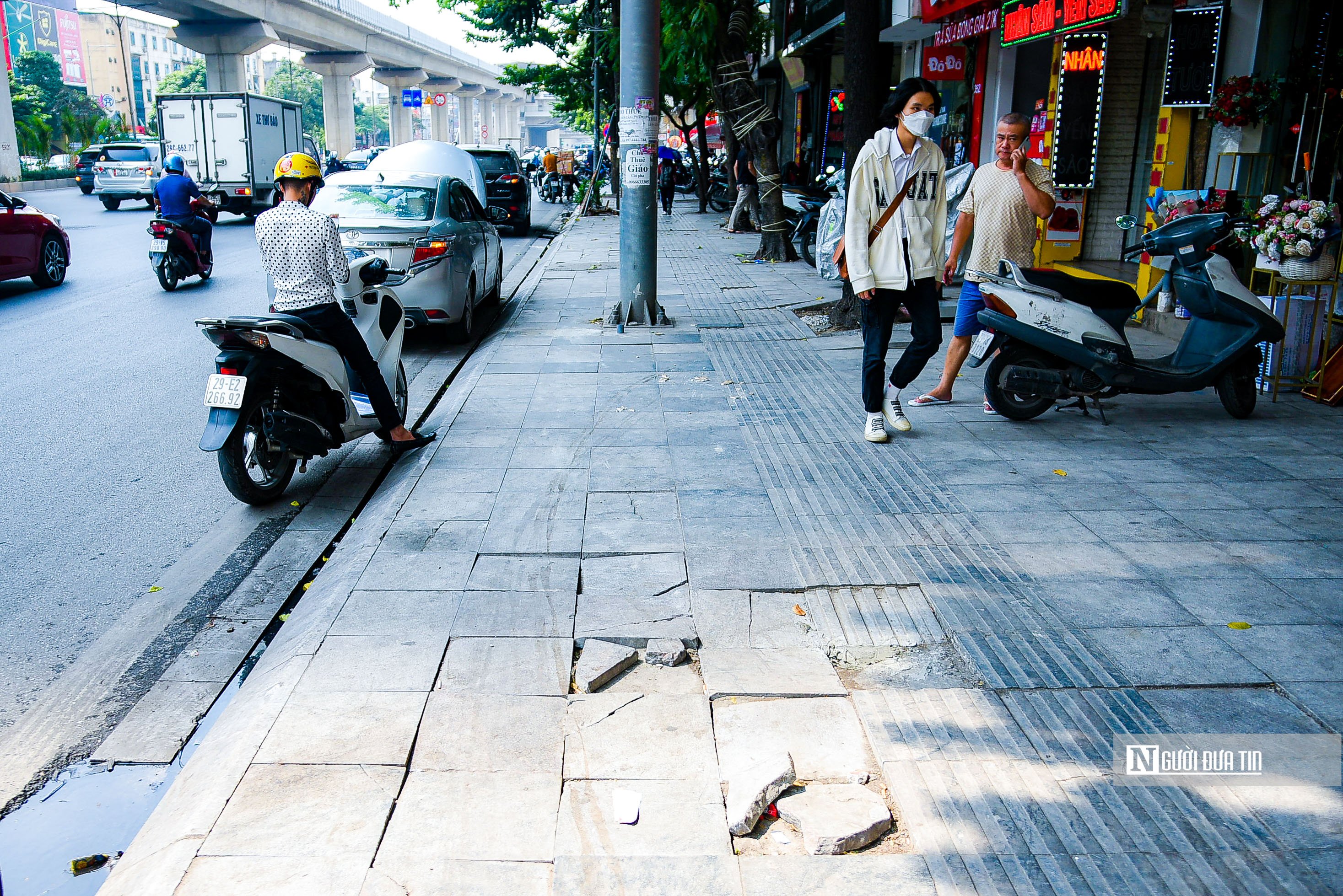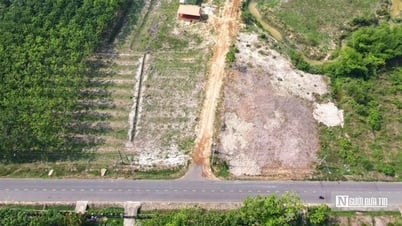The Hanoi Department of Construction has just sent a report to the Hanoi People's Committee on the results of rectifying investment and post-investment management of sidewalks on streets.
In this report, the Department of Construction has clearly stated a number of causes of pavement stones being peeled off, cracked, broken, etc., which have been reported by public opinion recently.
Through inspection, the Department of Construction found that the survey and design work of many units lacked sufficient geological information and current sidewalk usage data. Many project files did not have detailed designs for solutions to technical infrastructure joints, underground works, lamppost bases, and tree roots.
Many project profiles do not clearly state the basis and criteria for calculating the size of paving stones based on the characteristics and usage requirements of each street. This leads to the situation where the size ratio of paving stones (thickness compared to length and width) in some projects is not suitable.
In some projects, the survey and assessment of stone material supply sources are not complete and detailed enough to serve as a basis for selecting stone types with appropriate technical requirements, ensuring design criteria.
According to the Department of Construction, the inspection, control and acceptance of paving stone materials used in some projects have not been ensured according to regulations. Some paving stones do not ensure the ability to withstand bending force and abrasion according to national technical standards.

The sidewalk was cracked and degraded after a short time of use (Photo: Huu Thang).
Regarding the existence of the process, construction techniques, and supervision, according to the Hanoi Department of Construction, some streets have invested in paving the sidewalks but the technical infrastructure is not synchronized. During the use, the unit installed underground drainage, electricity, and telecommunications, and when it was returned, it did not ensure the technical standards, leading to damage and deterioration of the works.
Some streets with paved sidewalks are also degraded due to poor maintenance and preservation after paving. There are cases where sidewalks are immediately used by people and vehicles, causing the paving stones to easily peel off and crack.
According to the Department of Construction, the management and use of sidewalks on some streets are not in accordance with their intended use. In some locations, the sidewalk structure is designed only for pedestrians and rudimentary vehicles, but it becomes a parking place for many cars or a place for many heavy vehicles to get on and off.
During rush hour, motor vehicles travel on the sidewalks of some streets, affecting the urban beauty and negatively affecting the durability of sidewalk materials. In many places, sidewalks are also occupied to serve the business activities of the people.
To overcome the above situation, the Hanoi Department of Construction said that districts need to choose stone groups with high bending strength, suitable size or increase the thickness of the paving slabs.
Project investors also need to manage quality right from the design stage, and organize strict management and control of the origin of pavement stones. Districts and counties do not use sample designs or typical designs to apply to all streets.
In addition, the Hanoi Department of Construction also stated that project investors need to conduct detailed surveys and assessments of stone material supply sources as a basis for selecting stone types with appropriate technical requirements, ensuring design criteria; comply with regulations on inspection, control and acceptance of stone materials in accordance with regulations.
The Department of Construction recommends that districts only implement natural stone pavement when meeting synchronous requirements on technical infrastructure such as water supply and drainage, trees, lighting, electric cables, communications, and facade decoration .
Source



































































































Comment (0)